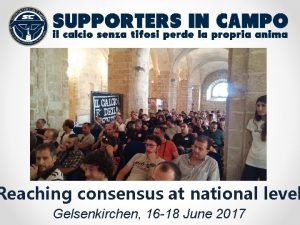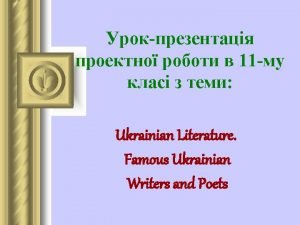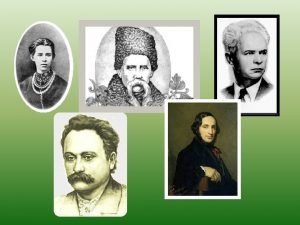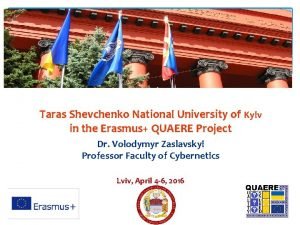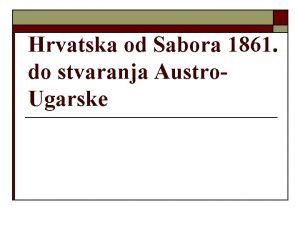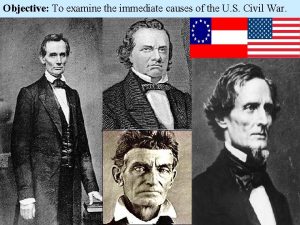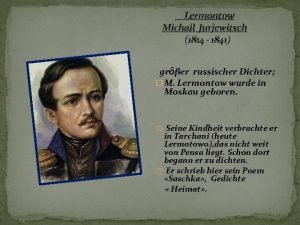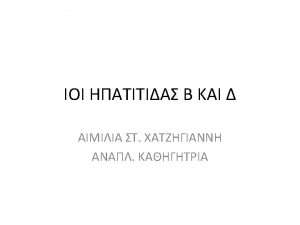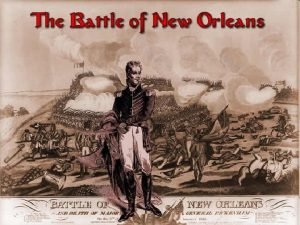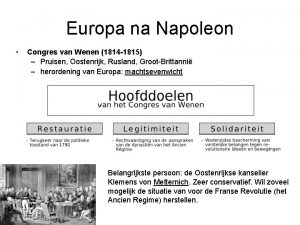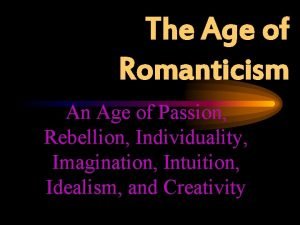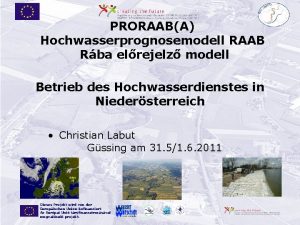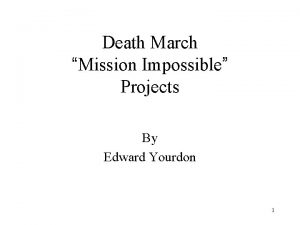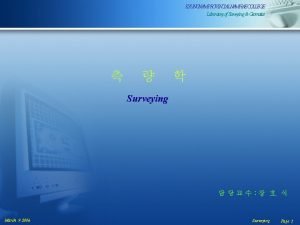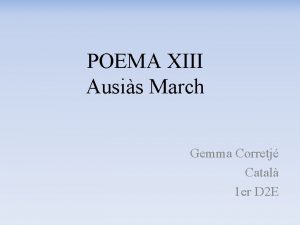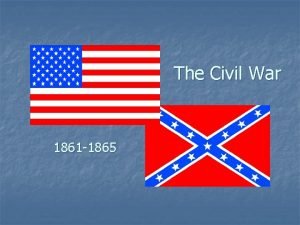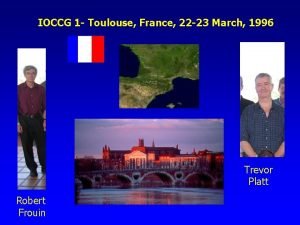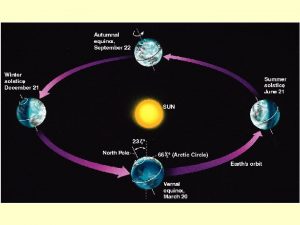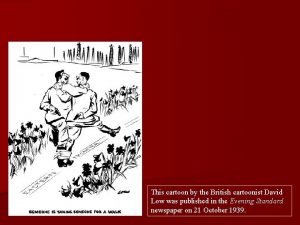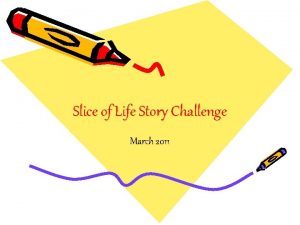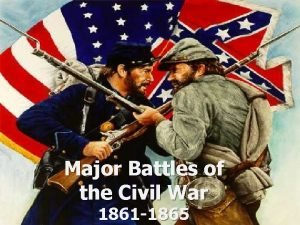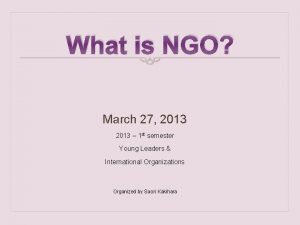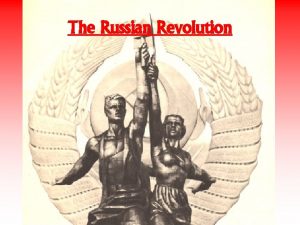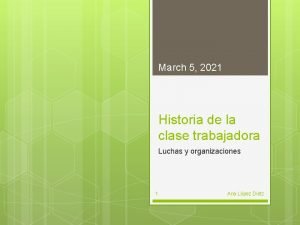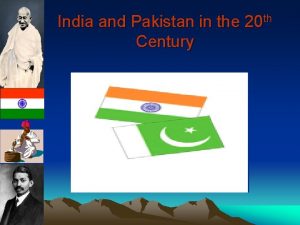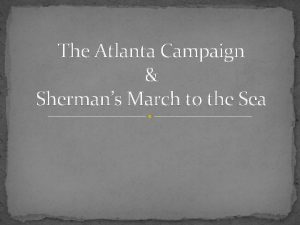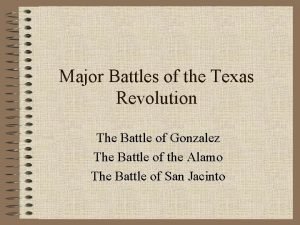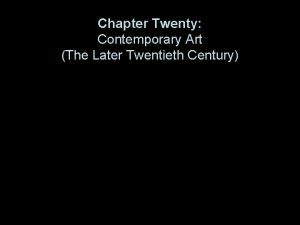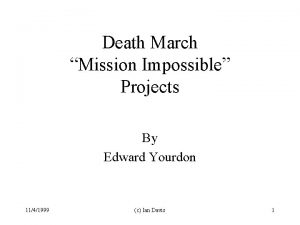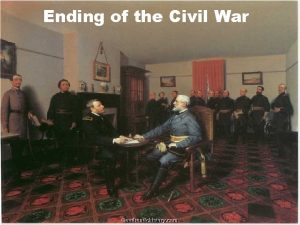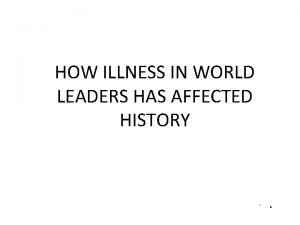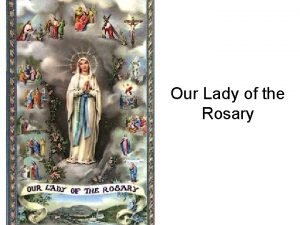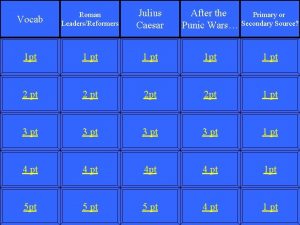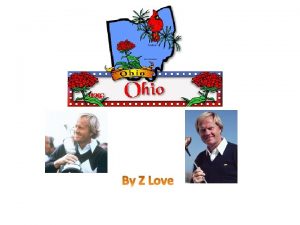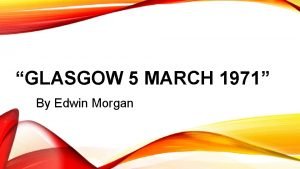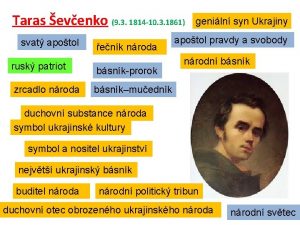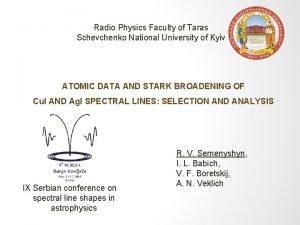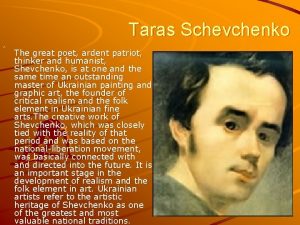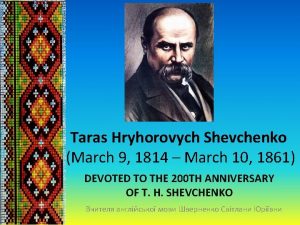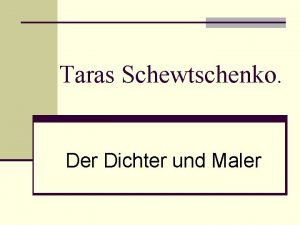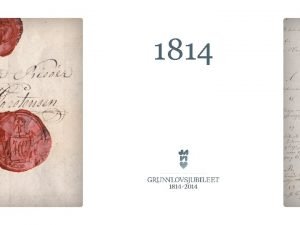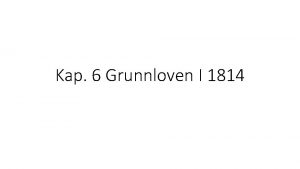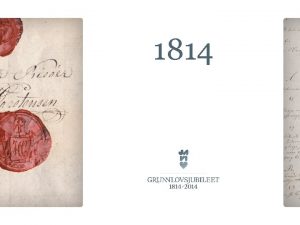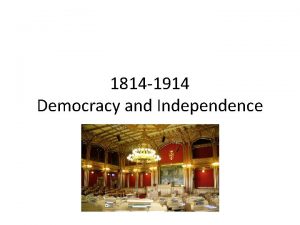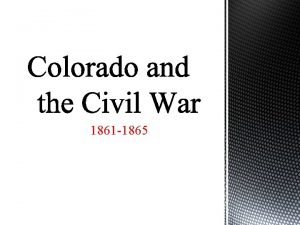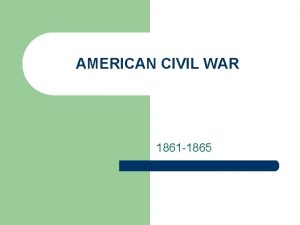Taras Schevchenko March 9 1814 March 10 1861


















































































- Slides: 82

Taras Schevchenko (March 9, 1814 – March 10, 1861)

Taras Schevchenko Born into a serf family in the village of Moryntsi Shevchenko was orphaned at the age of eleven. He loved to draw at every opportunity.

Gypsy Fortune-Teller

A PEASANT FAMILY

PORTRAIT OF A. ZAKREWSKA.

Kateryna

Taras Schevchenko In 1844, distressed by the condition of Ukrainian regions in the Russian Empire, Shevchenko decided to capture some of his homeland's historical ruins and cultural monuments in an album of etchings, which he called Picturesque Ukraine. On March 22, 1845, the Council of the Academy of Arts granted Shevchenko the title of an artist.

THE BOGDAN CHURCH IN SUBOTIV

THE VIDUBETSKY MONASTERY

ROMAN-CATHOLIC CHURCH IN KIEV

ANDRUSHI

Taras Schevchenko The poet produced several drawings and sketches as well as writings while serving and traveling on assignment in the Ural regions and areas on modern Kazakhstan.

Taras Schevchenko Taras Shevchenko spent the last years of his life working on new poetry, paintings, and engravings, as well as editing his older works. But after his difficult years in exile his final illness proved too much. Shevchenko died in Saint Petersburg on March 10, 1861, the day after his 47 th birthday.

Landscape Painting

Arkhip Ivanovich Kuindzhi (January 27, 1841 – July 24, 1910)

Arkhip Kuindzhi was born in January 1841 in Mariupol, but he spent his youth in the city of Taganrog. He grew up in a poor family, and Arkhip was six years old when he lost his parents, so that he was forced to make his living, working at the church building site, grazing domestic animals, and working at the corn merchant's shop.

Arkhip Kuindzhi During the five years, from 1860 to 1865, Arkhip Kuindzhi worked as retoucher in the photo studio of Isakovich in Taganrog. Kuindzhi tried to open his own photographer's studio, but without success. After that Kuindzhi left Taganrog for Saint Petersburg.

Arkhip Kuindzhi He studied painting mainly independently and in St. Petersburg Academy of Arts from 1868. The full member since 1893.

Arkhip Kuindzhi In 1872 the artist left the academy and worked as a freelancer. The painting Na ostrove Valaam (On the Valaam Island) was the first artwork, which Pavel Tretyakov acquired for his art gallery.

Arkhip Kuindzhi In 1873, Kuindzhi exhibited his painting The Snow, which received the bronze medal at the International Art Exhibition in London in 1874. In the middle of 1870 s he created a number of paintings in which the landscape motif was designed for concrete social associations in the spirit of Peredvizhniki.

Arkhip Kuindzhi Using light effects and intense colors shown in main tones, he depicted the illusion of illumination (The Ukrainian night, 1876; Birch Grove, 1879; After a thunderstorm, 1879). His later works are remarkable by decorative effects of color building.

A Birch Grove

Moonlight Night on Dneper

Rainbow

Serhii Vasylkivsky (October 19, 1854 - October 7, 1917)

Vasylkivsky grew up in an environment conducive to his development as an artist. He spent his childhood in the picturesque surroundings of Izyum.

Serhii Vasylkivsky Vasylkivsky's father was a writer and taught his son the aesthetics of proper calligraphy line, while his mother through her folk songs set the foundation which provided the inspiration for Vasylkivsky's art later in life. Lastly Dmytro Bezperchy, an art teacher at the Kharkiv gymnasium and a student of Karl Bryulov, provided Vasylkivsky the necessary artistic support.

Serhii Vasylkivsky After settling in Kharkiv in 1888, he was active in Ukrainian artistic circles and headed the architectural and art society there. Vasylkivsky died at age 62 in Kharkiv.

Serhii Vasylkivsky A typical Vasylkivsky theme is an armed horse-mounted cossack in steppes or a group of cossacks on sentry duty, travelling or resting.

Cossack house


Serhii Vasylkivsky left behind almost 3, 000 works of realist and impressionist art, sketches, drawings, a great number of which were lost during World War II. He was the first, after Taras Shevchenko, to draw upon subject matter from Ukraine's past and completed a number of works on historical and ethnographic themes.

Cossack Picket

The Cossack Meadow

The Market in Poltava

Ivan Konstantinovich Aivazovsky (1817 -1900)

Ivan Aivazovsky was born in the family of a merchant of Armenian origin in the town of Feodosia, the Crimea. His parents were under strained circumstances and he spent his childhood in poverty.

Ivan Aivazovsky In the autumn of 1836 Aivazovsky presented 5 marine pictures to the Academic exhibition, which were highly appreciated. In 1837, Aivazovsky received the Major Gold Medal for Calm in the Gulf of Finland (1836) and The Great Roads at Kronstadt (1836).

Ivan Aivazovsky In the course of his work, Aivazovsky evolved his own method of depicting the motion of the sea – from memory, without preliminary sketches, limiting himself to rough pencil outlines. Aivazovsky’s phenomenal memory and romantic imagination allowed him to do all this with incomparable brilliance.

Ivan Aivazovsky When in 1844 the artist returned to St. Petersburg, he was awarded the title of Academician, and became attached to the General Naval Headquarters.

Ivan Aivazovsky From 1846 to 1848 he painted several canvases with naval warfare as the subject; the pictures portrayed historical battles of the Russian Fleet The Battle of Chesme (1848), The Battle in the Chios Channel (1848), Meeting of the Brig Mercury with the Russian Squadron. . . (1848).

Subashi desant

Brig Mercury Attacked by Two Turkish Ships

The Ninth Wave


Ivan Aivazovsky The artist's greatest achievement of this period is The Black Sea (1881), a picture showing the nature of the sea, eternally alive, always in motion. Other important pictures of the late years are The Rainbow (1873), Shipwreck (1876), The Billow (1889), The Mary Caught in a Storm (1892).

Shipwreck

Tiflis

Ivan Aivazovsky left more than 6000 pictures, which are of very different value. There are masterpieces and there are very timid works. He failed to draw landscapes, could not draw a man.

Ivan Aivazovsky was not just a professional marine painter. He knew the sea and loved it sincerely. Although he turned occasionally to other art forms such as landscape and portraiture, these were only brief departures from his chosen genre to which he remained faithful all his life.

Ivan Aivazovsky died on 19 April (2 May New Style) 1900, on the verge of the twentieth century, leaving unfinished a picture he had begun that same day.

THE UKRAINIAN REALIST GENRE PAINTING

Mykola Pymonenko (9 March 1862 - 26 March 1912)

Mykola Pymonenko was born on March 9, 1862 in Priorka (a suburb of Kyiv). Prominent Ukrainian realist painter was a full member of the Saint Petersburg Academy of Arts from 1904. After studying at the Kyiv Drawing School (1878– 82) and the Saint Petersburg Academy of Arts he taught at the Kyiv Drawing School (1884– 1900) and Kyiv Art School (1900– 6).

Mykola Pymonenko produced over 700 genre scenes, landscapes and portraits, many of which were reproduced as postcards. They include Wedding (The Kyiv Gubernia) (1891), Girls Fortune-telling (1893), Kyiv Flower Seller (1897), At the Market (1898), Victim of Fanaticism (1899), Before the Storm (1906), Hay Gathering in Ukraine (1907), Meeting a Compatriot (1908), Young People (At the Well) (1909), Hopak (1908; bought by the Louvre), and Paschal Matins (1910).

Victim of Fanaticism

Harvest in Ukraine

Brod

Mykola Pymonenko also created illustrations for several of Taras Shevchenko's narrative poems, and in the 1890 s he took part in painting the murals in Saint Volodymyr's Cathedral in Kyiv.

Avant-garde Painting

Kazimir Severinovich Malevich

Kazimir Malevich Kazimir Malevich was born near Kiev. His father was the manager of a sugar factory. His family moved often and he spent most childhood in the villages of Ukraine amidst sugar-beet plantations, far from centers of culture. Until age 12 he knew nothing of professional artists, though art had surrounded him in childhood.

Kazimir Malevich studied drawing in Kiev from 1895 to 1896. In 1904, after the death of his father, he moved to Moscow where he studied at the Moscow School of Painting, Sculpture and Architecture from 1904 to 1910 and in the studio of Fedor Rerberg in Moscow (1904– 1910).

Suprematism

Black Square

Summer Landscape

Flowerpieces, Still Life

KATERYNA BILOKUR (December 7, 1900 – June 9, 1961)

KATERYNA BILOKUR Kateryna Bilokur was born in a peasant family in 1900 in the village of Bohdanivka near Yahotyn. She did not have any education and had to study by herself.

KATERYNA BILOKUR She had been very gifted in painting since her childhood. She began painting portraits of her relatives and villagers. In her later works Kateryna would extol a flower — the beauty of the land.

KATERYNA BILOKUR Her paintings derived from the lifegiving source of folk creativity based on songs, legends, tales and decorative arts. She admired the patterns on household utensils, Ukrainian clothes, towels, but her tender poetic soul was mostly charmed by flowers that blossomed around her house, in the gardens, meadows and fields.

Flowers behind the fence

Flowers, apples, tomatoes

Garden Flowers

Bunch of Flowers

KATERYNA BILOKUR Kateryna Bilokur first exhibited her paintings in Poltava and Kyiv in 1940 -41. She was warmly welcomed by her colleagues — Ukrainian artists and her way to recognition started.

KATERYNA BILOKUR But the Great Patriotic War began and her eleven paintings were burnt in Poltava museum. She lived through hardships and difficulties of this war. The 1950 s saw another raise in her artistic career. Her works were exhibited in Moscow and other cities.

KATERYNA BILOKUR The public was charmed by her pictures "Peonies", "Still life with bread", "Breakfast", "Flowers and walnuts" and others.

Peonies

Still life with bread

KATERYNA BILOKUR But a well-known painter Kateryna Bilokur had lived all her life in pain and poverty; she did not have any family or children. The grave illness tortured her, besides she had to look after her sick mother.

KATERYNA BILOKUR Great fame came later, after her death. Her works are exhibited in museums in Ukraine and abroad, a picture gallery bearing her name was open in Yahotyn, a street was named after her in Kyiv.
 Fondazione taras guest
Fondazione taras guest Ukraine famous writers
Ukraine famous writers як визначити століття за роками
як визначити століття за роками Taras shevchenko national university of kyiv rector
Taras shevchenko national university of kyiv rector Taras shevchenko biography
Taras shevchenko biography Anthem of poland
Anthem of poland Civil war 1861/1862
Civil war 1861/1862 Indian councils act 1861
Indian councils act 1861 South carolina 1861
South carolina 1861 Unionistička stranka 1861
Unionistička stranka 1861 Springfield model 1861 rifle facts
Springfield model 1861 rifle facts Price v easton (1833)
Price v easton (1833) Civil war 1861/1862
Civil war 1861/1862 John brown poster
John brown poster Russischer schriftsteller 1814 bis 1841
Russischer schriftsteller 1814 bis 1841 Hbv
Hbv A virtue is an habitual and firm disposition to do the good
A virtue is an habitual and firm disposition to do the good Squirrel gun 1814
Squirrel gun 1814 Mapa europa 1814
Mapa europa 1814 Europa 1814
Europa 1814 Age of passion
Age of passion Wasserstand bernhardsthal
Wasserstand bernhardsthal Opie childhood sociology
Opie childhood sociology Welcome to our class
Welcome to our class Genetic engineering conclusion
Genetic engineering conclusion Spring summer autumn winter and spring
Spring summer autumn winter and spring Tart essay introduction
Tart essay introduction Analyze the responses of franklin dbq
Analyze the responses of franklin dbq 1965 march
1965 march Death march edward yourdon
Death march edward yourdon March 9, 2006
March 9, 2006 20 mile march
20 mile march Ausias march poema xiii
Ausias march poema xiii Path of sherman's march to the sea
Path of sherman's march to the sea Macro environnement marketing
Macro environnement marketing Che guevara aleida march de la torre
Che guevara aleida march de la torre Happy wednesday march
Happy wednesday march 23 march 1996
23 march 1996 21 march equinox
21 march equinox David low cartoon in the london evening standard march 1948
David low cartoon in the london evening standard march 1948 Critical essay format
Critical essay format March madness banner
March madness banner March identifier clips
March identifier clips 535 before 14 march
535 before 14 march Slice march
Slice march Sherman's march to the sea
Sherman's march to the sea March 27, 2013
March 27, 2013 Jan feb mar
Jan feb mar March 1917 revolution
March 1917 revolution Poem for 8 march
Poem for 8 march What is name of
What is name of March 5 2021
March 5 2021 Blasting abrasives
Blasting abrasives Chapter 15 section 4 - aggressors invade nations answer key
Chapter 15 section 4 - aggressors invade nations answer key March 25 2011
March 25 2011 Glasgow 5th march 1971
Glasgow 5th march 1971 Salt march
Salt march Glm repeated measures
Glm repeated measures January february march april may
January february march april may March verb
March verb Path of sherman's march to the sea
Path of sherman's march to the sea March 7, 2012
March 7, 2012 Why is the long march important
Why is the long march important Grihalakshmi magazine march 2019
Grihalakshmi magazine march 2019 Texas revolution battles map
Texas revolution battles map Astronomy picture of the day march 29 2006
Astronomy picture of the day march 29 2006 Sigma gamma rho march of dimes
Sigma gamma rho march of dimes Heath of the brandenburg march
Heath of the brandenburg march Death march edward yourdon
Death march edward yourdon Civil war map sherman's march to the sea
Civil war map sherman's march to the sea Kaggle march madness
Kaggle march madness March 30 1981
March 30 1981 Offset printing march
Offset printing march Jan rose kasmir
Jan rose kasmir Sherman's march to the sea map
Sherman's march to the sea map Scriptural rosary joyful mysteries
Scriptural rosary joyful mysteries Ides of march punic wars
Ides of march punic wars March kindergarten newsletter
March kindergarten newsletter Ohio become a state
Ohio become a state There's a royal banner given for display
There's a royal banner given for display Microsoft asp.net core privilege escalation (march 2018)
Microsoft asp.net core privilege escalation (march 2018) Anong ideolohiya ang isinulong ni sun yat sen
Anong ideolohiya ang isinulong ni sun yat sen Glasgow 5 march 1971
Glasgow 5 march 1971
